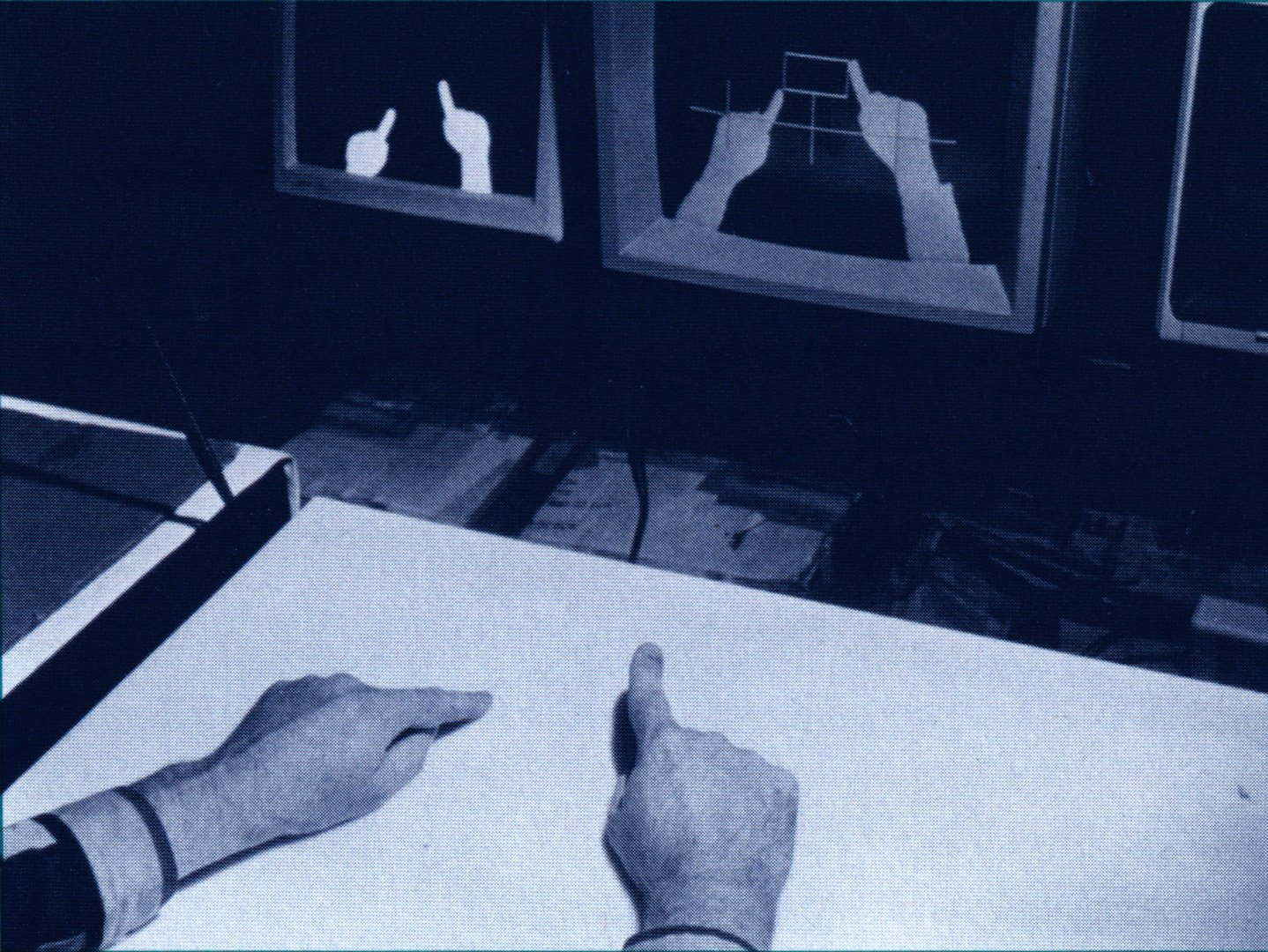“VIDEODESK Teletutoring” by Krueger
Conference:
- SIGGRAPH 1991
-
More from SIGGRAPH 1991:


Type(s):
Title:
- VIDEODESK Teletutoring
Program Title:
- Demonstrations and Displays
Presenter(s): Presenter(s):
Collaborator(s):
Project Affiliation:
- Artificial Reality Corporation
Description:
This teletutoring demonstration is based on the premise that the act of telecommunication creates a new place that consists of the information that is available to both participants simultaneously – in this case, the VIDEOPLACE.
The VIDEODESK is one manifestation of the VIDEOPLACE concept. It consists of a light table with a camera aimed down at the user’s hands. The image of the hands is superimposed over whatever application is operating on the computer. Specialized processors analyze the image of the user’s hands and identify the features of interest. specifically the fingertips. With this information, the image can be used to duplicate the functions of a mouse or other pointing devices. For instance, a finger can be used to menu or draw.
When people see their hands juxtaposed with graphics objects, they expect something to happen when their hands touch the objects. The VIDEODESK takes advantage of this expectation and makes it effective. The result is an extremely intuitive interface. The advantage of the VIDEODESK is that the desktop is free for traditional non-computer functions. There is nothing to hold, nothing to wear, nothing to lose, and there are no entangling wires.
The VIDEODESK also demonstrates a feature that is absent from most discussions of the user interface, and indeed from most artificial reality demonstrations: multipoint control. Almost all human interfaces permit the user to point to only one location on the screen at a time. Even reality gloves are typically used as single-point input devices.
While it is interesting that the participant’s image can be used as an input device, it is the natural use of the hands during teleconferencing that makes the VIDEODESK compelling. At the same time that the image of the user’s hands appears over the application on the user’s screen, the same image can appear over the same information on a remote colleague’s screen. The image of her hands can also appear on both screens. The result is a shared workspace in which both people can gesture exactly as they would if they were together. They can operate the same application simultaneously, or they can simply talk about the information that they both see.
In VIDEODESK Teletutoring, telecommunication is used for instruction by shared operation. Both the instructor and the visitor to Tomorrow’s Realities are able to operate the application either separately or in tandem. While a technical person might argue that the same function could be provided with a mouse, using your body in a natural way is exactly what artificial reality is all about.
Other Information:
VIDEOPLACE Perception: Artificial Reality Corporation
Hardware: Silicon Graphics 4D IRIS
Application: Education
Type of System: Author and player, multi-use
Interaction Class: Third-person




